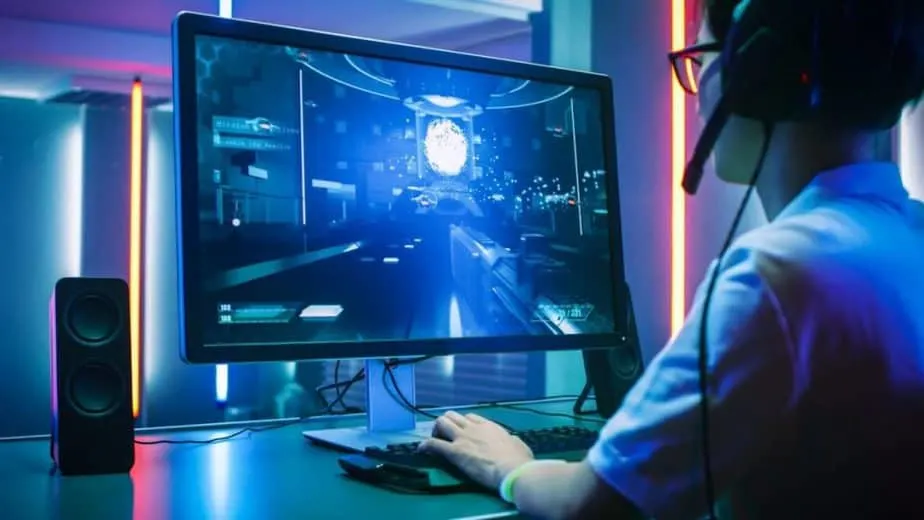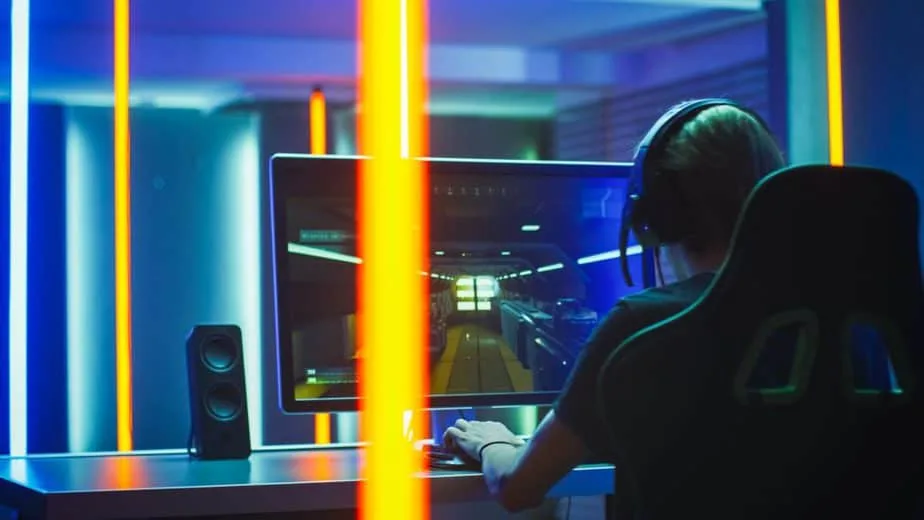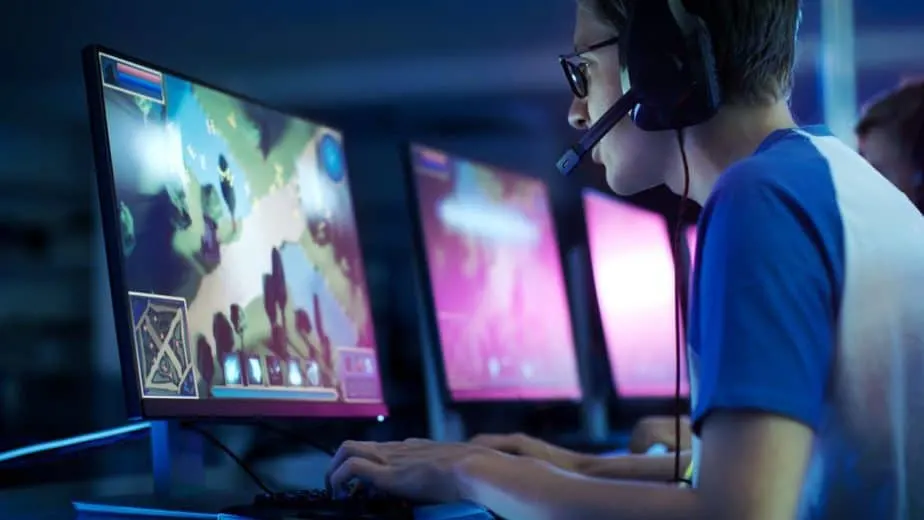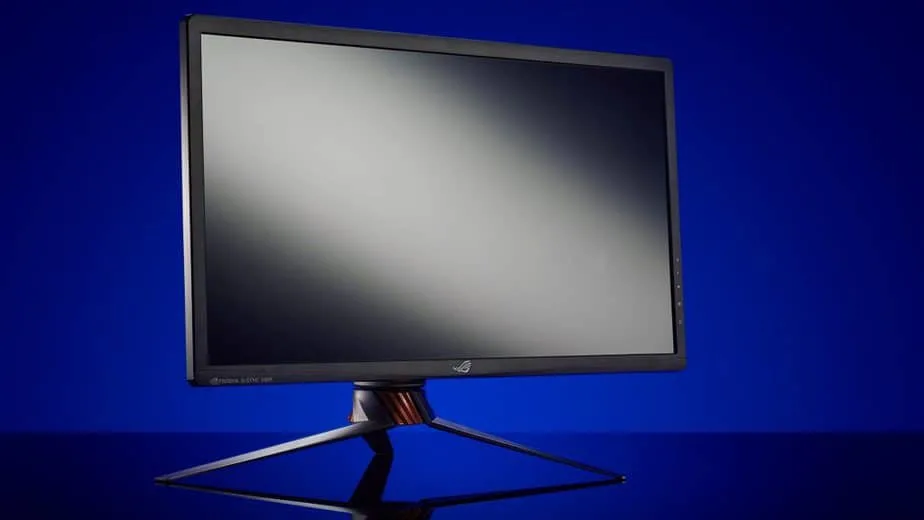A gaming monitor is one of the main parts of your gaming setup. It plays a very important role as it is responsible for the display of videos as well as other graphic information that is being generated on the computer. A monitor appears like a TV; however, the information that is displayed on it is at a higher resolution.
It is crucial to look for an ideal monitor as it is one of the most essential parts of your whole setup. It has an influence on all the functions of your PC, which is why the right monitor will provide you much more notion while performing various tasks on your computer. These days you can spend countless hours on the internet looking for that right gaming monitor but still end up on conflicting arguments about numerous brands or the features that are the best.
Whether you are new to gaming or someone who is playing at an expert level, you will still be faced with having to browse through hundreds of available options when it comes to gaming monitors. By figuring out what features are the most important before going through different brands and models will help you save not only your time but money too.
What Is The Right Amount To Spend On A Monitor?

Getting the right gaming monitor is just as important as getting it within your budget. The amount you want to spend on the right monitor depends on two things; what you need in a monitor and what your budget is. If you are looking to get more features regarding the FPS than some stunning displays, then you have a lot of good options to choose from than someone who wants a game that is visually better looking.
Getting a pc screen of a gaming monitor means that you should make sure you know what type you want as it influences your budget. Some are quite reasonable, while others cannot be as generous. Different gaming monitors need diverse energy, and they give off different display characteristics. There are four kinds of monitors that you can choose from that is well suited for you.
- LCD Monitors
- LED Monitors
- Plasma Display Panel
- CRT Monitors
The right amount to be spent on a gaming monitor at the end leads up to what you want and what your wallet can support.
- The ideal amount to be spent on a computer monitor that should also be considered a feasible in-budget amount is $300 – $500.
- If you are looking for a monitor that is more midrange, then the most reasonable amount to be spent on it would be between $600 – $800. If you catch a great deal under the belt, nothing is better than that.
- If you are going for a high-end monitor, then the amount that is acceptable to be spent on it would be around $1000. It will provide you with more advanced and greater features for your gaming monitor.
What To Look For In A Monitor?
The monitor is the PC’s soul. If you do not have the right display, everything you do on your computer will look dull and seem lackluster whether you are viewing or editing photos or videos or maybe just browsing on websites.
1. Resolution
A monitor with a higher resolution will have better picture quality. The resolution of a monitor tells you the number of pixels, as a monitor has in width x height format. The minimum you require is 1920 x 1080, which is also known as 1080p, Full HD (FHD), and HD. You can get sharper images with QHD and even sharper with 4K. The resolution you will require for gaming is determined by your PC’s GPU and, of course, the budget you are working with.
Even though 1080p is the most common resolution among gamers but as new games are released with higher-quality displays, 1440p and 4K are expected to be the standard for every gamer. Higher resolution will have a certain impact on your gaming performance as it may reduce the number of frames your computer can drive in a game. Let us discuss a few optimal monitor sizes for some common resolutions. Keep in mind, a higher resolution will cost more money.
- The most common ones would be 1080p and 24 inches/27 inches. This should normally work with most setups.
- A less common one would be 1440p and 27 inches. It will require mid/high-end hardware.
- 4K and 27+ inches is the least common one, and it will require the best hardware there is to make the most of.
- The emerging technology of 8K and 32+ inches will require the best hardware, and as of now, there are not any 8K games available.
2. Aspect Ratio

Aspect ratios are undoubtedly an important feature to keep in mind when looking for a monitor. This factor is often overlooked when it should not be. Make sure to look at different aspect ratios to choose from, and however single one of them is well suited for personal gaming setups.
Widescreen (16:9) or Ultrawide (21:9): Monitor size will also influence the resolution you want to run on your monitor. Most gamers use the 1080p resolution, which looks fine on 24-inch monitors. If you try to push your resolution up to 1440p or 4K on the same monitor size, you are going to want a larger monitor screen size. The best monitor size to be used would be 16:9 for gaming.
Ultrawide or multi-monitors will work too, but they support limited games and, in some cases, can be worse, especially in multiplayer titles. Not to mention the fact that a bigger screen requires better hardware to be able to support it completely because the increased amount of pixel will become a larger workload for your GPU.
3. Size
The size of the monitor matters as well. Pixel density has a great effect on the monitor quality, and the best one is 109 pixels per inch (PPI). A large monitor with a lower resolution will have a low pixel density. For using a typical desktop distance, a 32-inch screen is big enough, and it is not that hard to find a 32-inch gaming monitor that is at 4K resolution for under $1,000.
4. Refresh rate
The bigger the refresh rates, the better. Refresh rates tell you the number of times your monitor screen updates with new information per second. It is measured in hertz (Hz). Bigger numbers mean smoother, better, and less cut images. Refresh rate is an essential thing, especially for gamers who will require a monitor with at least 75 Hz that is combined with the lowest response time. A lot of monitors that are designed for gaming offer at least 120 Hz.
If we talk a bit more about refresh rate, three main differences require focus between the 60Hz – 240 Hz range which are improved responsiveness, reduced ghosting and tearing, and motion resolution. With a greater refresh rate, the gameplay becomes much quicker and smoother.
Obviously, the monitors with better refresh rates will also have increased prices. The monitor best suitable in regards to price and performance would be 144Hz. It was once considered high-end, but with today’s technological advancement, it is certainly not the case with the latest gaming monitors. The new and latest gaming monitors, most of the time, come with a 144Hz refresh rate.
- Motion Resolution: With a better refresh rate, the image on the screen becomes clearer as it moves around, enabling you to have a better gaming experience overall.
- Screen Tearing: Screen tearing occurs when your PC’s graphics card is producing more or fewer frames than your monitor’s refresh rate. This results in image distortion. To reduce screen tearing, a monitor with a high refresh rate is preferred. Hz and FPS have a symbolic relationship, a 120Hz monitor will perform great with 120 FPS.
- Responsiveness: The amount of time between refreshes, if we see in terms of gaming, then it would be the time it takes to see the reaction on your monitor after inputting a command. For gaming, you want everything running as smoothly as possible and as quickly as possible. You do not want an input lag of anything under 10.9ms, especially for high-definition games.
5. Response time

Unlike refresh rates, the shorter the response time, the better. It is important for gaming monitors. Response time tells you the amount of time it takes for a monitor to change pixels from black to white, or if it is a GTG response time, then the pixels change from one shade of gray to another.
If the response time is longer, then it can mean motion blur during gaming or watching videos that are fast-paced. The highest response time for gaming monitors you will find is 5ms. The fastest gaming monitors may have a response time of 0.5ms.
When you are playing a game, every second counts, and so to make sure your monitor can handle everything and display it quickly and clearly, you should have a monitor with a fast response time. Monitors with slow response time will cause the visuals to be delayed, and this could lead to ghosting.
It is a little difficult to know without testing that which 1ms monitors are the best. The naked eye will not be efficient in picking up any visual impacts when the response time goes below 5ms. So just look for the lowest possible when you are buying a gaming monitor. The response time does not have a huge impact on the price of a panel.
- Overdrive: Some gaming monitors allow you the feature of response time overdrive. This allows you to adjust the response time speed and reduce the ghosting that is left behind by fast-moving objects. This is best if you enjoy playing fast-paced games. This is a great feature, but you will need to care about your monitor’s refresh rate before you start using the response time overdrive, as it can cause inverse ghosting or pixel overshoot.
- Overshoot: This is when your monitor overcompensates the time for pixel transition and changes the colors before a frame has arrived. It is basically the inverse of ghosting. Instead of an object trailing behind a fast-paced object, it will be in front of it.
6. Panel tech
Panel tech for imagine quality (TN < IPS < VA). TN monitors are the fastest and less expensive because of low image quality when viewing them from side angles. IPS monitors are considered to have a bit faster response time, and they show better colors than the VA panels, but VA monitors are considered to have the best contrast out of the three-panel types. You will also need to look at the panel uniformity that you chose for your gaming monitor.
A monitor with a good panel uniformity will provide you a greater level of accuracy which will enable you to see the tiniest details of the game you are playing while keeping the colors and brightness consistent across the screen.
7. Flat Monitors
Flat monitors are available in both 21:9 (Ultrawide) and 16:9 (Widescreen) sizes. Flat-screen monitors have been here since forever. They are a bit more budget-friendly as compared to curved monitors. They may be lower in price, but they offer you an amazing gaming experience regardless. Ultrawide monitor will provide you with an increased field view which is obviously advantageous in multiplayer games.
Flat monitors allow better gaming credentials as they have better higher color accuracy, refresh rates and response time. They can also be considered a great alternative for multi-screen setup and still save you a lot of desk space.
The only disadvantage with flat monitors would be that not every game supports a 21:9 (Ultrawide) aspect ratio which can leave the edges of your screen blank, black, and basically unused. It is known as ‘black bars’ in the gaming universe. Hopefully, this will not remain an issue for long.
8. Curved Monitors

Curved monitors provide a more immersive environment and provide you with a large field of view. Curved monitors are kind of new to the gaming community. We measure the curvature of the monitor using ‘R’. The lower the number is, the greater the curve.
The more immersive environment also means that there will be a lesser strain on your eyes. This is because we are used to seeing things around us in length, width, and height which is all three-dimensional to us, and on curved monitors, the image is kept adjacent to the eye without having to adjust to the images on a flat-screen. They can also be prone to glare as the light sources are coming from different angles instead of one.
9. Monitor Bezel
Another important feature of a gaming monitor is the monitor bezel. If you are not aware of what this is, it is simply the frame of the monitor that carries the display screen in the center.
The reason why this feature is important to look at is that the thickness or the thinness of the bezel is what makes your gaming experience immersive or non-immersive. A thinner bezel means a more immersive display. This is because the image will spread to the edges of the screen instead of being cut off by a thick plastic frame.
10. Build Quality
Finally, it is quite important to look at the build quality of your gaming monitor. Why? Simply because you want to make sure that you are getting the complete value for your money. Gaming monitors can be an expensive investment, and having to spend more on repairing or replacing parts is far from an ideal situation.
The build quality comes down to the materials used in the construction of the gaming monitor. Low-quality plastic can cause the ports to snap, which will obviously cost you more money to be replaced. So, it is very important to ensure the overall build of your gaming monitor is strong and that your investment will pay off and benefit you in the future instead of just becoming a never-ending hassle.
Conclusion

It is hoped that you have come a little closer to understanding what to look for in a gaming monitor. It might not be a core component of your gaming setup, but it is the part you will be looking at the most and making use of. Whether it is you wanting to go for competitive gaming or pushing for your games to look as good as possible, selecting the right gaming monitor is very important.
No matter what PC you own, the monitor you have will have a dramatic effect on everything you do, which makes buying a new monitor a smart investment that can help you and benefit you immediately.
You can find various gaming monitors that may be way under your budget but make sure you do not waste your money with fewer features or without specs that you require to make your PC setup stand out or just make your gaming experience worthwhile in general.

